Back in June, I was fortunate enough to have caught a glimpse of an Elephant Hawk Moth in my back garden. It was around midnight and its buzzing wings brushed passed my head after feeding on the honeysuckle. For an instant my head torch illuminated its vibrant pink body before it flew away into the night. Press forward two months (to August) and while walking in my local park what do I find crawling along the floor but an Elephant Hawkmoth Caterpillar.
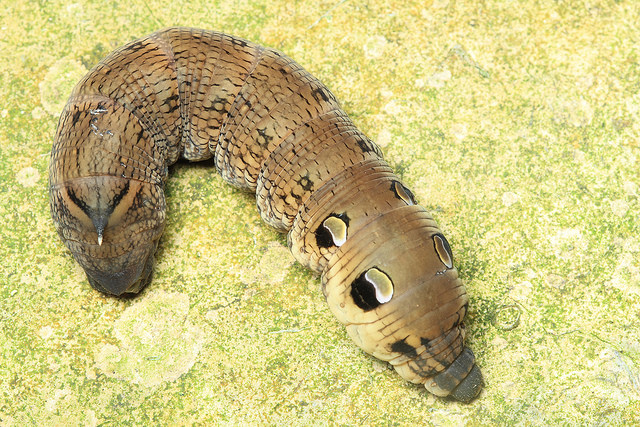
A vulnerable Elephant Hawk Moth Caterpillar looking for a place to pupate.
The first thing that impressed me was the black and lilac eyespot and the strange head, extending like an elephant’s trunk (hence the name). The spike-like horn on its rear-end was also notable. Most impressive of all was, this brown/greenish sausage was an outlandish size, thicker and longer than my thumb with two pairs of fearsome eyespots on each side of its head. When I picked it up it contracted its head accordion-style to create a fearsome hooded shape like a small cobra.
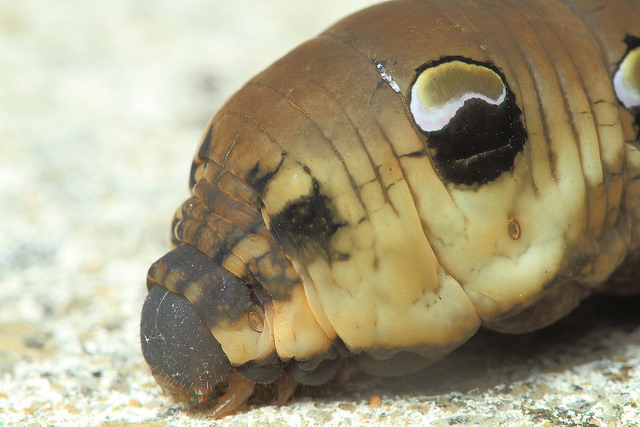
Fearsome eyespots on each side of its head to ward off predators
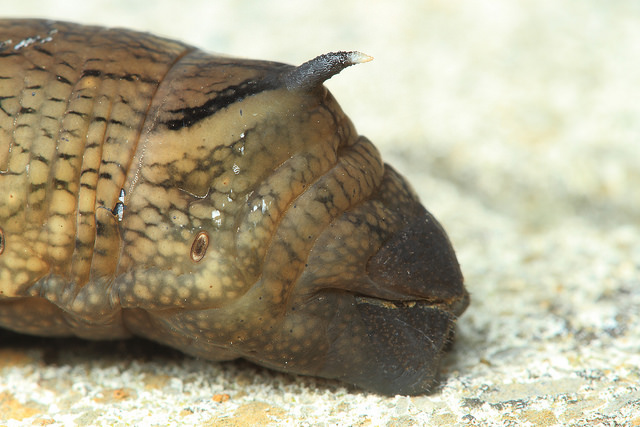
Spike-like horn on its rear-end
Its conspicuous size made it particularly vulnerable to predators and I instantly could appreciate how its snake-like mimicry could warn off a hungry bird. This was the first Elephant Hawk Moth that I’d seen and it left a vivid impression on me (much more than any photograph or illustration seen in a book). I found its strangeness fascinating. This huge moth larva was pretending to be a snake to scare predators. This reminded me of the power of insects to also scare people. The entomologist Roger Key, despairing of our attitudes to them reported that a magnificent Pivet Hawk Moth caterpillar, a harmless, horned, green and purple wonder (much like the Elephant Hawk Moth) had allegedly terrorised a Leicestershire family who’d found it in their garden. The offending insect was flushed down the loo, a sad indictment of our attitude towards wildlife we mistakenly interpret as threatening.
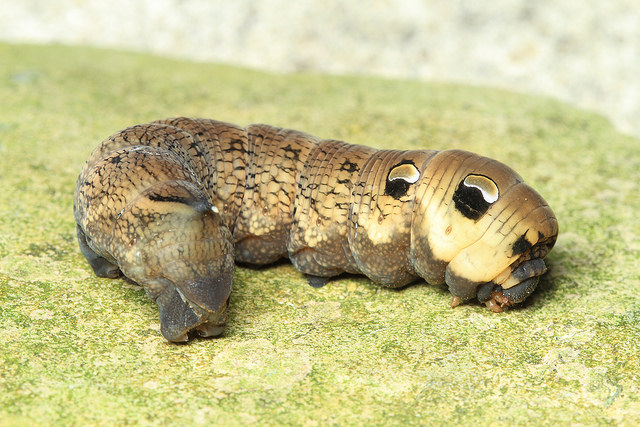

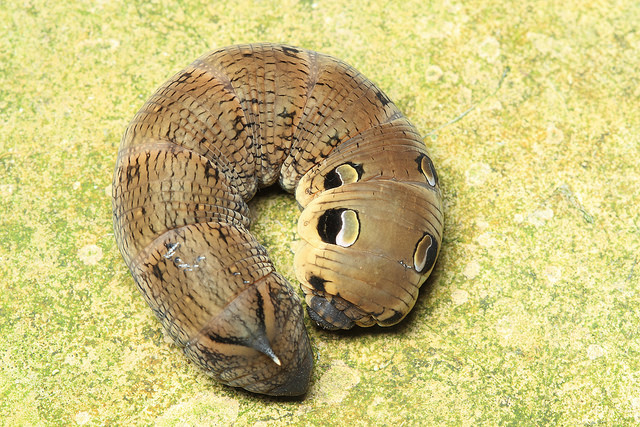
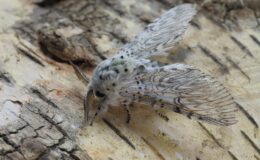
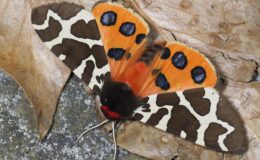
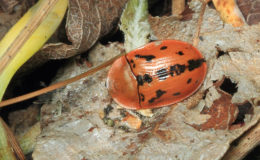
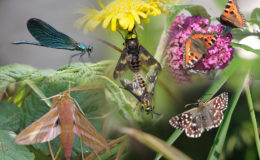
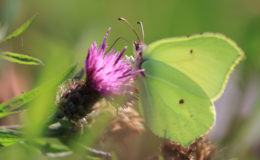
Jane
August 19, 2021 6:59 pmmy cat brought in a strange looking item, I noticed it was alive and had a face that was similar to the cartoon Jimini cricket, after showing it to my neighbours we replaced it in a beech hedge as it appeared to need to go there, I shall be keeping a look out for it as it was a remarkable looking being. Out was the first I had seen and wondered if it had been dropped by a passing bird. would love to know if they are common in Gloucester.